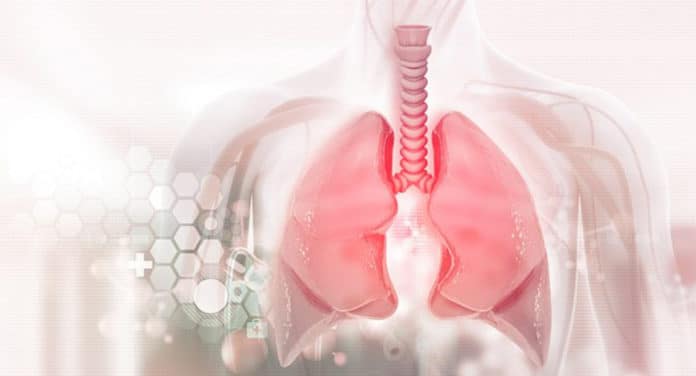A new study by the Boston University School of Medicine (BUSM) suggests that Lung immunity is accomplished by cells that line the air spaces, epithelial cells using a specialized immune-facing molecule, MHC-II.
The epithelial MHC-II localize and scripts the resident memory T (TRM) lymphocytes inside the lungs.
Epithelial cells are imagined as supportive respiratory functions, whereas MHC-II connects immune cells to immune cells. This new study suggesting MHC-II on lung epithelial cells tells TRM cells that the direct and function are novel and unanticipated.
Scientists analyzed the lung epithelial cells from human and experimental models. They found that all the different types of epithelial cells express MHC-II and increase its expression during infections.
In cell cultures, lung epithelial cells could use this molecule to tell T cells what to do so that they could respond appropriately to microbes that might cause an infection.
Hindering just MHC-II on lung epithelial cells prompted distorted numbers, types, and places of CD4+ T cells in the lungs, but not the blood. This uncovers that these particular lung cells were liable for directing pulmonary immunity.
First author Anukul Shenoy, Ph.D., a postdoctoral scientist in BUSM’s Pulmonary Center, said, “Our study suggests that lung epithelial cells are akin to gatekeepers that are tasked with appropriately instructing locations of CD4 TRM cell outposts and their ability to fight future infections. Given that TRM cells, beyond their protective roles in pneumonia, play key roles in fighting cancers and provoking asthma, our findings have larger implications in understanding, preventing, and treating multiple lung diseases.”
The study also uncovered: 1. Other immune-facing molecules depend on MHC-II to get to the cell surface, where they can interact with other cells to do their immune instruction. 2. The lack of MHC-II on lung epithelial cells causes changes to the local lung immune system that mirror a rare but serious outcome of immune-targeting cancer therapies (“checkpoint inhibitor therapies”).
Joseph Mizgerd, ScD, professor of medicine, microbiology, and biochemistry at BUSM, said, “This led to the discovery that a molecular target of these cancer treatments is one of the molecules that depend on MHC-II for getting to the cell surface, and the suggestion that deleterious side effects from checkpoint inhibitor therapies may result from inhibition of immune cell guidance by lung epithelial cells.”
Shenoy said, “The study could help us design interventions (both preventative and remedial) to harness the ability of lung epithelial cells in modulating the pulmonary immunity. That way, we would be able to use the patients’ lung epithelial cells to turn on protective roles of TRM cells during pneumonia and/or cancers, while being able to shut off their pathological roles during asthma, as deemed necessary.”
Journal Reference:
- Shenoy, A.T., Lyon De Ana, C., Arafa, E.I. et al. Antigen presentation by lung epithelial cells directs CD4+ TRM cell function and regulates barrier immunity. Nat Commun 12, 5834 (2021). DOI: 10.1038/s41467-021-26045-w
